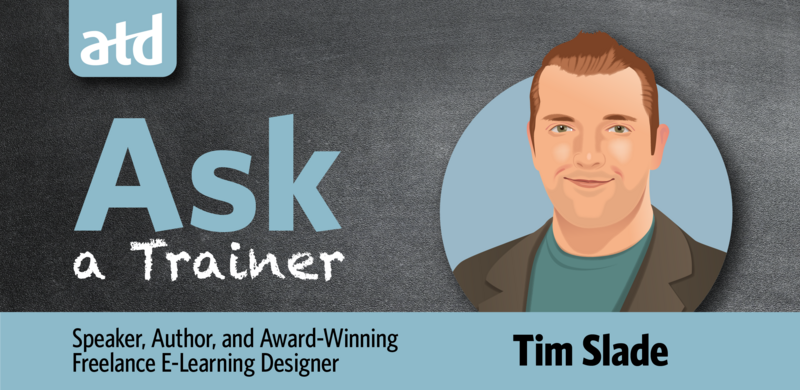ATD Blog
Ask a Trainer: Interviewing Tips for Hiring an Instructional Designer
Wed Jan 15 2020

Hi Tim,
I work as the director of learning for a large manufacturing company, and this year I have been fortunate enough to be given the budget to expand my instructional design team. While I have experience interviewing and hiring training and facilitation professionals, it’s my first time hiring anyone who will be working as an e-learning and instructional design professional.
What tips can you share about how I can make the interview process as thorough and informative as possible?
Hiring an e-learning designer, an instructional designer, or any kind of creative professional can be challenging. Not only do you need to ensure they’ll be a fit on your team, you also need to make sure their creative talents align with what you need right now and in the future.
Depending on what you need, finding the right person can be even more challenging. ATD’s job bank is a great resource for posting job openings and finding experienced instructional design and e-learning candidates. Before you start the hiring process, though, there are a lot of questions you need to ask yourself, like:
Do you need someone who is purely an instructional designer, or do you need someone who can do instructional design and development?
Will they need to project manage their own projects and stakeholders, or will they work in collaboration with a separate project manager.
Do you need them to create their own graphics and multimedia, or will they work with a dedicated graphic designer?
Based on what I’ve learned from having to hire both e-learning and instructional designers in my past career, I offer these pointers:
Tip #1: Determine What You Need Right Now and In the Future
When you have the opportunity to expand your team, it’s likely a sign that additional work will be coming your way. As a leader, you’ll be thinking about what gaps this new person can help you fill right now versus what challenges you’ll face in the future. Don’t make the mistake of hiring someone who is perfect for today but unprepared for tomorrow.
As you seek to define what you’ll need from your potential candidates, it’s an ideal opportunity to evaluate what your department and stakeholders will be needing from you in the future. Once you have an idea of how you’ll need this new person to help you “raise the bar,” you can then determine whether you need to hire someone for capacity (the amount of work your team needs to deliver), capability (the mix of talents on your team), or both.
Tip #2: Review Their Portfolio
Once you’ve determined the types of candidates you’re seeking to hire, it’s time to go find them! The truth is, a lot has changed in the world of learning and development, especially when it comes to resumes and portfolios.
I wouldn’t consider a candidate who can’t provide a portfolio or examples of their work. Nowadays, many employers care less about the formal credentials a candidate can offer and more about what skills the candidate can offer right now. Whether this is right, wrong, or otherwise, it has resulted in portfolios “carrying more weight” than what’s detailed on a candidate’s resume.
As part of the submission process, ask for a link to the candidate’s portfolio or examples of work. And at the very minimum, if a candidate doesn’t have a formal, online portfolio (which is still common), ask them to bring examples of their work to the interview.
Tip #3: Validate Their Skills With a Challenge
My final tip might seem a bit contradictory but let me explain. While you always review a candidate’s portfolio or examples of work as part of the interview process, you shouldn’t take it at face value. Here’s the thing: A portfolio can illustrate the result of a project, but it can’t show everything that went into creating it. As a result, this leaves a lot of ambiguity about what level of involvement the candidate had in creating the complete example. Did they create their own graphics? Did they use a template? How long did it take to create?
As part of the interview process, I recommend that you create some sort of instructional design or e-learning challenge to put their skills to the test. Design a challenge in which your candidates need to create something from scratch within a defined timeframe. For example, you could have each of your candidates create a sample e-learning course based on a short project brief you provide. This will give you a chance to see their skills in real-time.
I hope these tips help and I hope you find the right folks to join your team!
Best of luck,
Tim
Do you have a learning question you’d like me to tackle? You can email them to [email protected]. Also, visit the Ask a Trainer hub to check out all of your questions and my answers.
We welcome your comments and engagement on these posts. All posts are reviewed to ensure appropriateness based on ATD’s requirements for postings in our online communities.
Please note: Content shared in this column is provided by the author and may not reflect the perspectives of ATD.
You've Reached ATD Member-only Content
Become an ATD member to continue
Already a member?Sign In

